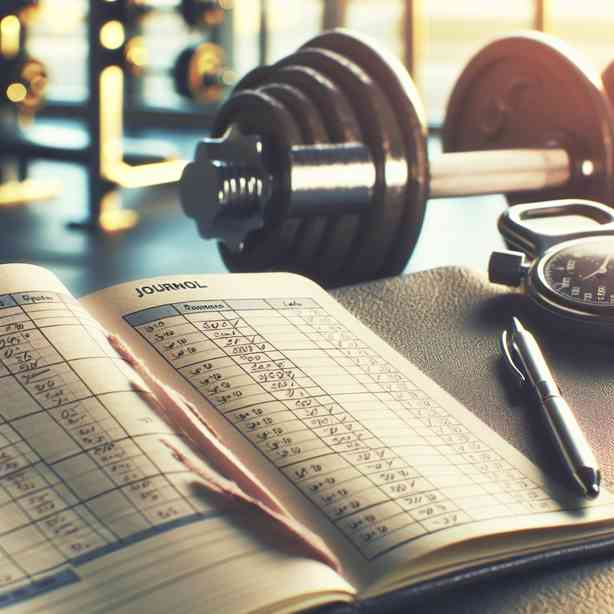
Logging every rep during your workouts may seem like just another task to add to your already busy routine. However, this practice can yield incredible benefits that enhance your fitness journey in ways you might not have considered. By documenting each repetition, you not only track your progress but also establish a stronger connection to your goals, enhance motivation, and refine your workout routine effectively. In this article, we will explore the reasons why logging every rep is essential, offering a comprehensive understanding of its advantages and guiding you on how to implement this method into your training.
To begin with, one of the most significant benefits of logging each repetition is tracking your progress. When you consistently document your workouts, you create a detailed history of your performance. This historical data serves as a reference point, showing you how far you’ve come since you started training. Whether you aim to build strength, increase endurance, or enhance your overall fitness level, keeping track of the weight, sets, and reps allows you to celebrate small victories along the way.
For instance, suppose you have been utilizing a particular weight for your bench press. If you keep a record of your reps and sets, you will soon notice patterns and improvements. You might observe that you can perform more repetitions with the same weight over time or even feel ready to increase the load after consistently hitting your target reps. This sense of progression is not only motivating but also vital for enhancing your performance as you aim for new personal bests.
Moreover, logging workouts can assist in setting realistic and achievable goals. With an accurate record of your previous performances, you can identify your strengths and weaknesses more effectively. This self-awareness allows you to set specific goals, such as increasing your squat weight by a certain percentage over the next month or aiming for a higher number of reps in your deadlift. Having clear and targeted goals gives you direction in your training, ensuring that your efforts lead to tangible outcomes.
Additionally, maintaining a workout log can enhance motivation. It can be easy to lose sight of your efforts when you’re only focused on the moment-to-moment challenges of a workout. However, by reflecting on your progress recorded in your log, you can rekindle the sense of achievement that often gets overshadowed by the daily struggles of pursuing fitness. On days when your motivation wanes, reviewing your previous successes can reignite your passion and commitment to your goals.
Another crucial aspect of logging your workouts is the ability to analyze your training program. With detailed records, you can assess which exercises yield the best results and which ones do not contribute to your goals. This reflective process leads to more informed decisions about how to adjust your routine. For instance, if you find that certain exercises lead to consistent growth while others do not, you can prioritize the more effective ones, creating a more streamlined and purposeful workout plan.
Furthermore, logging each rep helps prevent overtraining and reduce the risk of injury. When you track the volume and intensity of your workouts, you can recognize patterns that might indicate you’re pushing yourself too hard. For instance, if you notice a sudden spike in your training volume, you may need to reassess your recovery strategies or possibly scale back your workouts. By being mindful of your workload, you can ensure that you’re allowing your body enough time to recover, reducing the likelihood of burnout or injury.
In addition, having a detailed workout log can aid in enhancing accountability, especially if you work with a trainer or a workout partner. Sharing your progress with someone else can encourage you to stick to your routine and show up for your workouts, knowing that you have someone to report to. This kind of accountability can be an excellent motivational tool, pushing you to put in that extra effort. Likewise, when you see your partner or trainer referencing your log, it reinforces the value of logging every rep, making it a shared commitment to your mutual fitness journeys.
When getting started with logging your reps, it’s essential to find a method that works best for you. Some opt for traditional paper journals, while others prefer digital apps or spreadsheets. The key is to choose a format that you find convenient and accessible, allowing you to document your workouts consistently.
To effectively log your workouts, consider including the following elements:
1. **Date of Workout**: Tracking the date helps create a timeline of your training journey.
2. **Exercise Name**: Clearly note each exercise you perform.
3. **Sets and Reps**: Document the number of sets and reps completed for each exercise.
4. **Weights Used**: Record the load for each set; this will help with tracking progress over time.
5. **Comments or Notes**: Use this section for insights on how you felt during the workout, any challenges you encountered, or adjustments for next time.
In conclusion, logging every rep is not merely a mundane task; it is an empowering practice that can significantly impact your fitness journey. Understanding and tracking your progress encourages goal setting, enhances motivation, aids in refining your training program, helps you prevent overtraining, and fosters accountability. By diligently documenting each aspect of your workouts, you create a comprehensive roadmap of your fitness journey, filled with progress and insights.
As you embark on or continue your training, consider incorporating the habit of logging every rep into your routine. You’ll likely discover that this practice transforms not only how you view your workouts but also how you achieve your fitness goals, leading to a more rewarding and fulfilling experience overall.


